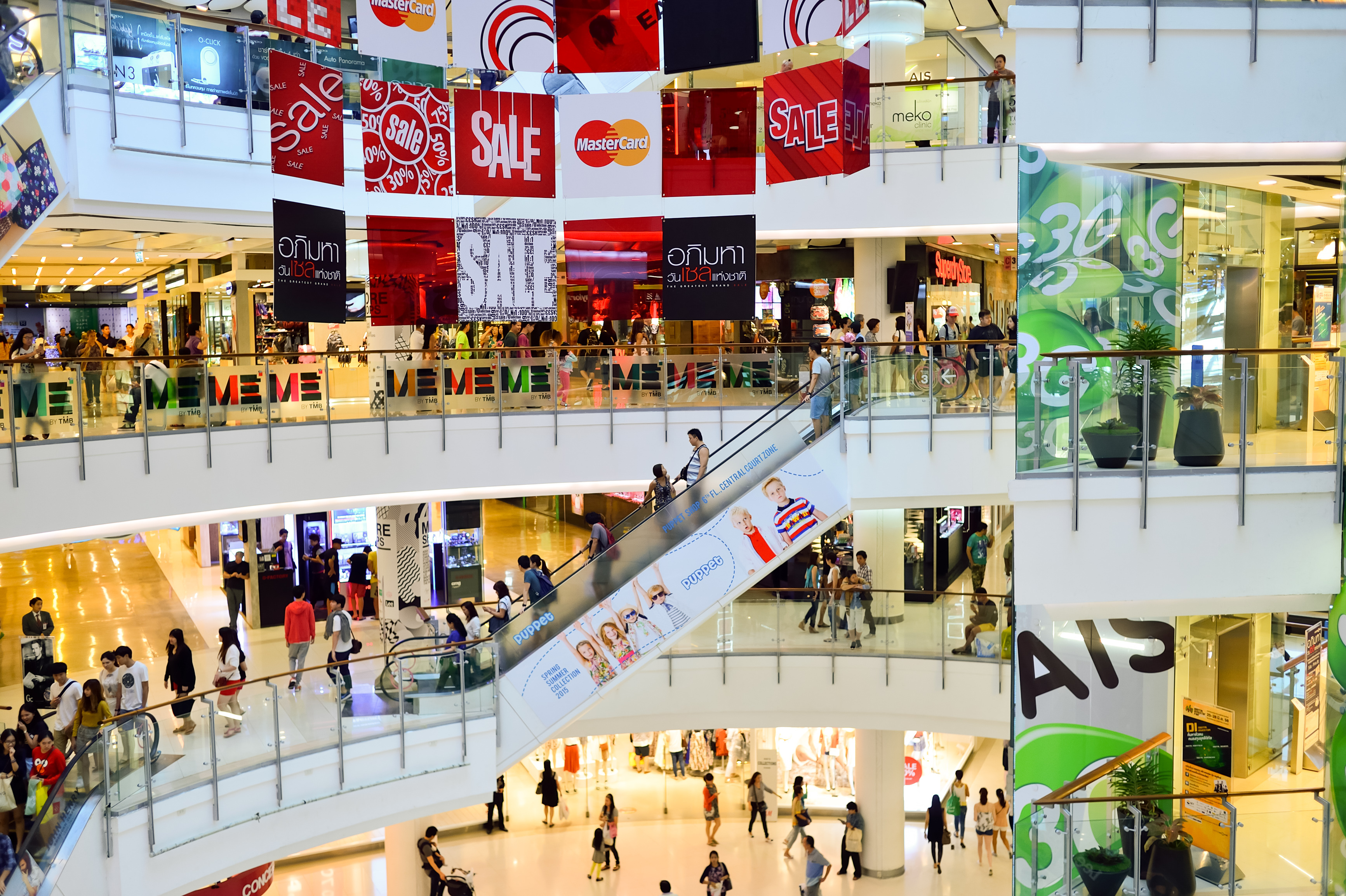

ด้วยศักยภาพของตลาดค้าส่งอาหารในประเทศไทยที่ยังมีโอกาสเติบโตได้อีกมากในระยะยาว CRC จึงประกาศเปิดตัวธุรกิจค้าส่ง (B2B) ภายใต้แบรนด์ “GO Wholesale” ด้วยเงินลงทุน 2 หมื่นลบ. โดยตั้งเป้าสร้างรายได้ 6-7 หมื่นลบ. ในอีก 5 ปีข้างหน้า เราคาดว่าผลกระทบต่ออุตสาหกรรมจะมีจำกัดในระยะสั้น เนื่องจาก CRC วางแผนเปิดร้าน Go Wholesale เพียง 4 สาขาในปี 2566 นอกจากนี้เรายังคาดว่าผลกระทบต่ออุตสาหกรรมจะอยู่ในระดับที่สามารถบริหารจัดการได้ในระยะกลาง เนื่องจาก CRC จะขยายสาขาร้าน Go Wholesale ในระดับปานกลางท่ามกลางยอดขายในอุตสาหกรรมที่เติบโตอย่างต่อเนื่อง เรายังคงเรทติ้ง OUTPERFORM สำหรับ CRC CPAXT และ BJC
CRC เข้าสู่อุตสาหกรรมค้าส่งอาหารในประเทศไทย CRC เปิดตัวธุรกิจใหม่ซึ่งมุ่งเน้นการค้าส่งอาหารภายใต้แบรนด์ “Go Wholesale” ที่มีกลุ่มลูกค้าเป้าหมาย คือ 1) กลุ่ม HoReCa; 2) กลุ่มผู้ค้าปลีกอาหาร; 3) กลุ่มผู้ให้บริการอาหาร; และ 4) กลุ่มผู้ชื่นชอบการทำอาหาร โดยในปี 2566 CRC วางแผนเปิดร้าน Go Wholesale จำนวน 4 สาขา โดยจะเปิดสาขาแรกวันที่ 27 ต.ค. ในย่านศรีนครินทร์ กรุงเทพฯ สาขาที่สองในเชียงใหม่ในเดือนพ.ย. และอีกสองสาขาถัดไปในพัทยาและนิคมอุตสาหกรรมอมตะซิตี้ชลบุรีในเดือนธ.ค. CRC ตั้งเป้าเปิดร้าน Go Wholesale 40-45 สาขา (แต่ละสาขามีพื้นที่ขายสุทธิ (NSA) ที่ 5,000-7,000 ตร.ม.) ทั่วประเทศภายในปี 2571 ด้วยเงินลงทุน 2 หมื่นลบ. โดยตั้งเป้าสร้างรายได้ 6-7 หมื่นลบ. ในอีก 5 ปีข้างหน้า กลยุทธ์หลักของ Go Wholesale คือ สินค้าครบครันหลากหลาย (ตั้งเป้ายอดขายอาหารสดที่ 40% ของยอดขาย) อำนวยความสะดวกให้แก่ผู้ประกอบการด้วยจุดเด่นที่สามารถสั่งซื้อสินค้าในรูปแบบที่กำหนดเองได้ และสร้างความเชื่อมั่นในเรื่องคุณภาพ Go Wholesale จะได้รับการสนับสนุนจากพลังเครือข่ายของ Central Group ที่ประกอบไปด้วยศูนย์การค้า 110 แห่งในประเทศไทยและเวียดนาม ร้านอาหารกว่า 6,750 ร้าน และโรงแรม 93 แห่ง นอกจากนี้ยังมี Loyalty Platform ที่สามารถเข้าถึงลูกค้า 25 ล้านราย (20 ล้านรายจาก The1 loyalty program ในประเทศไทย และ 4 ล้านราย ในเวียดนาม)
อุตสาหกรรมค้าส่งสินค้าอุปโภคบริโภคแบบ B2B ยังคงน่าสนใจ เรามองว่า CRC เข้าสู่อุตสาหกรรมค้าส่งสินค้าอุปโภคบริโภคแบบ B2B เนื่องจากเป็นตลาดมีขนาดใหญ่ที่มีโอกาสเติบโตและมี penetration rate จากร้านค้าปลีกแบบดั้งเดิมเข้าสู่โมเดิร์นเทรดมากขึ้นอย่างต่อเนื่อง ตลาดค้าส่งสินค้าอุปโภคบริโภคแบบ B2B ของประเทศไทยมีมูลค่า 2.6 ล้านลบ. ในปี 2565 (โดยมี penetration rate ของร้านค้าส่งที่เป็นระบบ 65%) CPAXT (เข้าสู่ธุรกิจตั้งแต่ปี 2532) เป็นผู้เล่นรายใหญ่ที่สุด โดยมียอดขายในธุรกิจ B2B มากกว่า 2 แสนลบ. (9%) และมีร้านค้า B2B 152 สาขาในประเทศไทย (ร้านค้าขนาดใหญ่ในรูปแบบ Classic และ Eco Plus 96 สาขา ด้วย NSA 5,000-12,000 ตร.ม. และสัดส่วนยอดขายอาหารสดต่อยอดขายรวมอยู่ที่ 30-50% และร้านค้าขนาดเล็ก 56 สาขา ด้วย NSA 80-5,000 ตร.ม.) ณ สิ้นปี 2565 BJC (เข้าสู่ธุรกิจในปี 2562) มียอดขายจากธุรกิจโมเดิร์นเทรดแบบ B2B ต่ำกว่า 2 พันลบ. (0.1%) และมีร้านค้า B2B 14 สาขาในประเทศไทย (ร้าน Big C Food Services และ Big C Depot ด้วย NSA 600-1,600 ตร.ม.) ณ สิ้นปี 2565 เมื่อมองย้อนกลับไป SSS growth ในธุรกิจ B2B ของ CPAXT แข็งแกร่งกว่าผู้ประกอบการค้าปลีกรายอื่นภายใต้การวิเคราะห์ของเรา โดยเติบโตเฉลี่ย 2.9% ต่อปี ในปี 2559-2562 (เทียบกับค่าเฉลี่ยของกลุ่มที่ 0.5% ต่อปี) โดยได้รับการสนับสนุนยอดขายกลุ่ม HoReCa ที่เติบโตเพิ่มขึ้น และ 2.2% ต่อปี ในปี 2563-2564 (เทียบกับค่าเฉลี่ยของกลุ่มที่ -5.2% ต่อปี) โดยได้รับการสนับสนุนจากยอดขายที่เพิ่มขึ้นจากร้านค้าปลีกอาหารอันเป็นผลมาจากมาตรการกระตุ้นเศรษฐกิจของรัฐบาลและลูกค้าปลายทางในช่วงที่เกิดสถานการณ์การแพร่ระบาดของโควิด-19
ผลกระทบระยะสั้นมีจำกัด ต้องติดตามผลกระทบระยะยาว เราคาดว่าผลกระทบต่ออุตสาหกรรมและ CRC ในระยะสั้นจะมีจำกัดเมื่ออิงกับการแผนการเปิดร้าน Go Wholesale 4 สาขา (2% ของร้าน B2B ทั้งหมดสำหรับผู้เล่นรายอื่นที่จดทะเบียนในตลาดฯ) ในปี 2566 โดย CRC ตั้งเป้ายอดขาย Go Wholesale ที่ 500 ลบ. ในปีนี้ และ CRC ยังคงเป้ายอดขาย มาร์จิ้น และงบลงทุนรวมในปี 2566 ไว้คงเดิม เราคาดว่าผลกระทบต่ออุตสาหกรรมจะอยู่ในระดับที่สามารถบริหารจัดการได้ในระยะกลาง โดยใช้สมมติฐานว่ามีการขยายสาขาร้าน Go Wholesale ในระดับปานกลางท่ามกลางอุตสาหกรรมที่เติบโตอย่างต่อเนื่อง เรามองว่าการที่ CRC ตั้งเป้ามีร้าน Go Wholesale 40-45 สาขา ในปี 2571 เป็นเรื่องที่ท้าทาย เนื่องจากที่ผ่านมาผู้ประกอบการค้าปลีกรายอื่นต้องใช้เวลาในการปรับธุรกิจก่อนที่จะหันมาขยายสาขาร้านค้ารูปแบบใหม่เชิงรุกมากขึ้น ผลการดำเนินงานของร้าน Go Wholesale เป็นปัจจัยสำคัญที่ต้องติดตาม โดย CRC ตั้งเป้าแต่ละสาขาถึงจุดคุ้มทุนภายใน 2 ปี และแต่ละรูปแบบถึงจุดคุ้มทุนภายใน 4-5 ปี หลังจากเปิดดำเนินการ
ปัจจัยเสี่ยงที่สำคัญ คือ การเปลี่ยนแปลงในกำลังซื้อ ต้นทุนที่สูงขึ้นจากแรงกดดันเงินเฟ้อ อัตราดอกเบี้ยที่สูงขึ้น และนโยบายรัฐบาลใหม่
To get in on the LT potential of Thailand’s wholesale food sector, CRC has introduced its business-to-business (B2B) model under the “Go Wholesale” brand, investing Bt20bn to generate Bt60-70bn in revenue over the next five years. We see little impact on the industry in the near term, as CRC plans only four Go Wholesale stores in 2023. We also expect manageable impact on the industry over the medium term as Go Wholesale expansion will be moderate in ongoing industry sales growth. Maintain Outperform on CRC, CPAXT and BJC.
CRC enters Thai food wholesale industry. CRC launched a new business unit focusing on wholesale food under “Go Wholesale”, targeting: 1) HoReCa customers, 2) food retailers, 3) food service operators and 4) individuals who like to cook. In 2023, CRC plans to open four Go Wholesale stores, the first on October 27 in the Srinakarin area in Bangkok, the second in Chiang Mai in November, and the next two in Pattaya and at the Amata City Industrial Estate in Chonburi in December. It plans to invest Bt20bn to open 40-45 Go Wholesale stores nationwide by 2028, with net saleable area (NSA) for each at 5,000-7,000 sq.m., generating Bt60-70bn in revenue over the next five years. Go Wholesale will offer a wide assortment (targets fresh food sales of 40% of sales), customized ordering and services and reliable quality. Go Wholesale will leverage synergy with Central Group, which has 110 department stores in Thailand and Vietnam, 6,750 restaurants and 93 hotels and a loyalty platform, with access to 25mn customers (20mn from The1 program in Thailand and 4mn in Vietnam).
B2B grocery wholesaling industry still attractive. We view that CRC enters the B2B grocery wholesaling industry, as market size is large with organic growth and greater penetration rate from traditional trade to modern trade players. Thailand’s B2B grocery wholesaling market was valued at Bt2.6trn in 2022 (with 65% organized wholesale penetration). CPAXT (in the business since 1989) was the largest player with B2B sales at above Bt200bn (9%), and had 152 B2B stores in Thailand. Of these, 96 were large format stores (Classic and Eco Plus stores) with 5,000-12,000 sq,m. NSA and 30-50% fresh food sales to total sales, and 56 were small format stores with 80-5,000 sq,m. NSA at end-2022. BJC (entering the business in 2019) had sales from its modern trade B2B unit of below Bt2bn (0.1%) and BJC had 14 B2B stores in Thailand (Big C Food Services and Big C Depot stores with 600-1,600 sq.m. NSA) at end-2022. Looking back, CPAXT’s B2B SSS growth was more resilient than other retailers under our coverage, growing 2.9% p.a. in 2016-19 (vs sector average of 0.5% p.a.) from growing HoReCa sales and 2.2% p.a. in 2020-21 (vs sector average of -5.2% p.a.) from growing sales from food retailers backed by government stimulus and end users during the pandemic.
Limited ST impact, LT impact to be monitored. We expect limited short-term impact on the industry and CRC, based on four new Go Wholesale stores (2% of total B2B stores for other listed players) in 2023, with CRC targeting sales of Bt500mn. CRC is keeping its 2023 sales, margin and capex targets unchanged. We expect manageable industry impact over the medium term, assuming moderate Go Wholesale store expansion amid ongoing industry growth. We view its targeted 40-45 Go Wholesale stores in 2028 as a challenge, as other retailers historically take time to allow for adjustment before becoming more aggressive in expansion of a new format. It will be important to monitor Go Wholesale’s store performance. CRC targets breakeven at store level in two years and 4-5 years at the format level.
Key risks are changes in purchasing power, an inflation-led rise in costs and higher interest rate, and new government policies.
PDF คลิกอ่านเพิ่มเติม Commerce230915_T
PDF Click Commerce230915_E